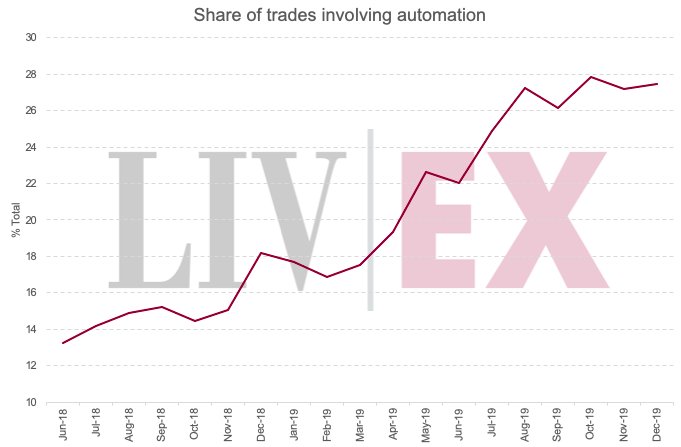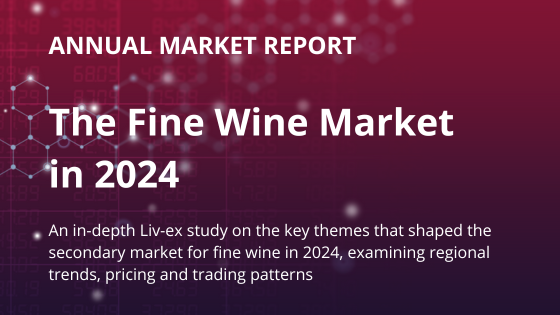One of the most important themes in the fine wine market in the past 18 months has been the impact of trading automation. In a short period, the number of automated trades has risen exponentially as more and more merchants connect. This recently prompted us to publish a report on how and why to get started.
But what is trading automation? And how is it changing the face of the wine market?
What is trading automation, and how is it rising?
Trading automation happens when merchants use technology to put their systems in sync with Liv-ex. It enables them to list stock on Liv-ex automatically – direct from their stock system – or extend Liv-ex’s £39m+ offers to their customers, who can make instant purchases via their website.
As you can see from the chart above, the number of trades on Liv-ex involving automation has been climbing for the past 18 months.
Some of these trades are for wines listed on Liv-ex directly from a merchant stock system; others are for wines purchased via a merchant website. Some are for both.
One of the first ever automated trades was for an English wine. It had been listed automatically by a UK merchant. A merchant in the US was displaying Liv-ex offers on its website. A customer from New York logged on to his local merchant’s site, placed an order and paid, and the full transaction completed automatically. This is one example of the power of automation and a connected wine market.
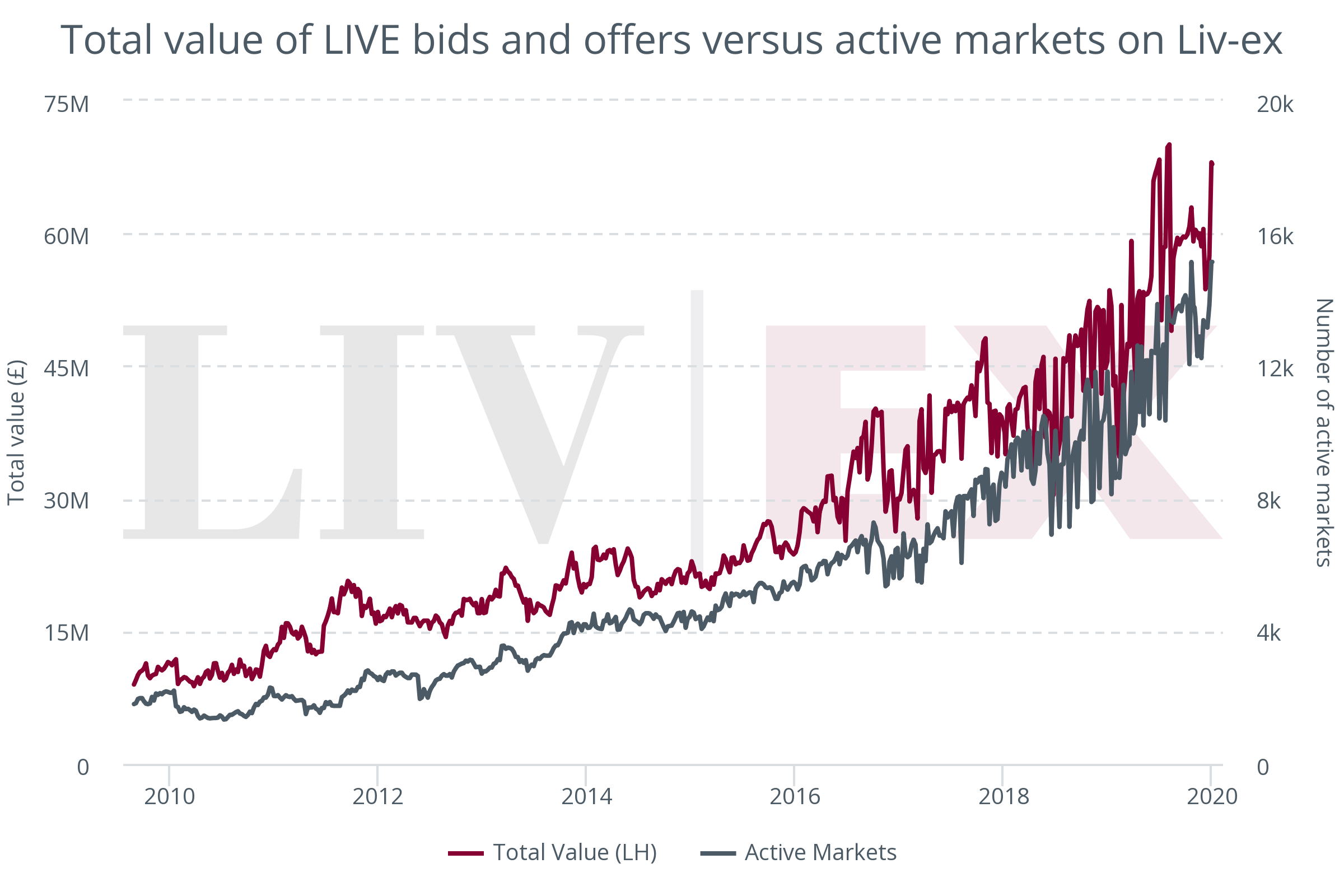
A larger market
The most obvious impact of automation has been an increase in the wines on Liv-ex’s marketplace. In July 2019, the total value of bids and offers peaked at a record £70m, as our recent post on the topic explored.
This has been spurred on by automation, which makes it easier to list stock quickly.
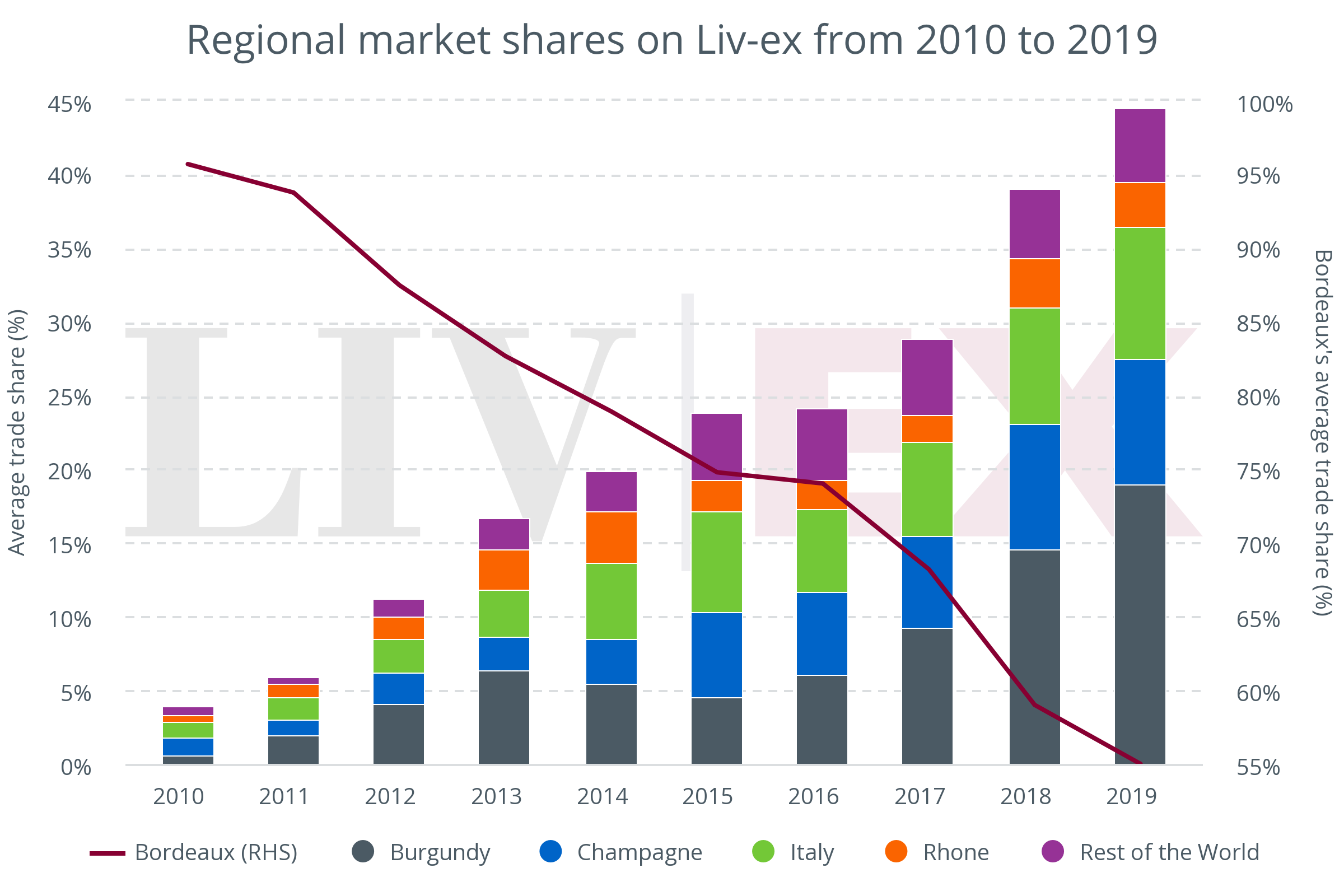
Wines from regions that have not traditionally found a strong market on Liv-ex are much more likely to trade via automation. New Zealand is the best example of this: over 70% of trades for New Zealand wines involve some sort of automation.
This is probably because many automated trades – where wines from Liv-ex are listed on a merchant website – are completely initiated by private clients. They are more likely to spend time searching for these wines than professionals, who devote more of their buying and selling time to high value stock.
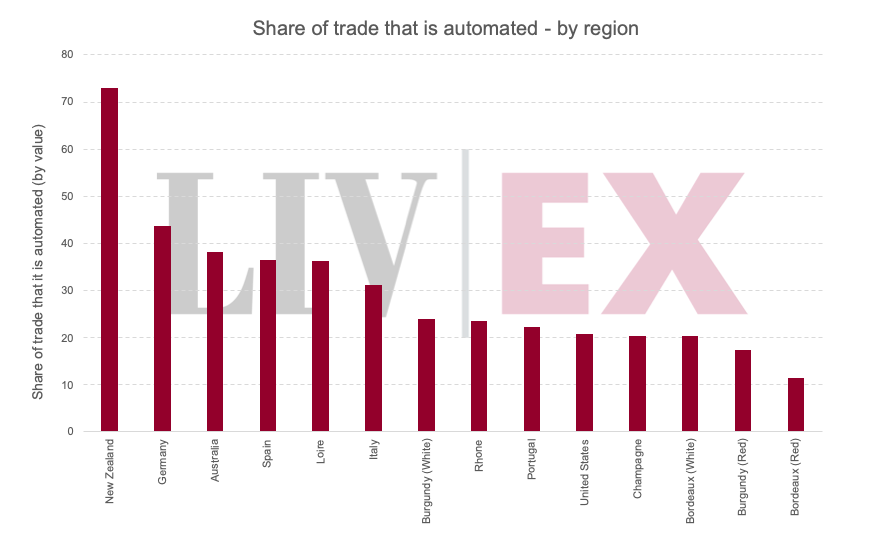
The chart below shows the regional breakdown of manual and automated trades. It shows that traditional regions like Bordeaux represent a much higher proportion of the former than the latter.
Conversely, less traditional regions are more represented in the world of automation. When power is given to the customer, the market is even broader.
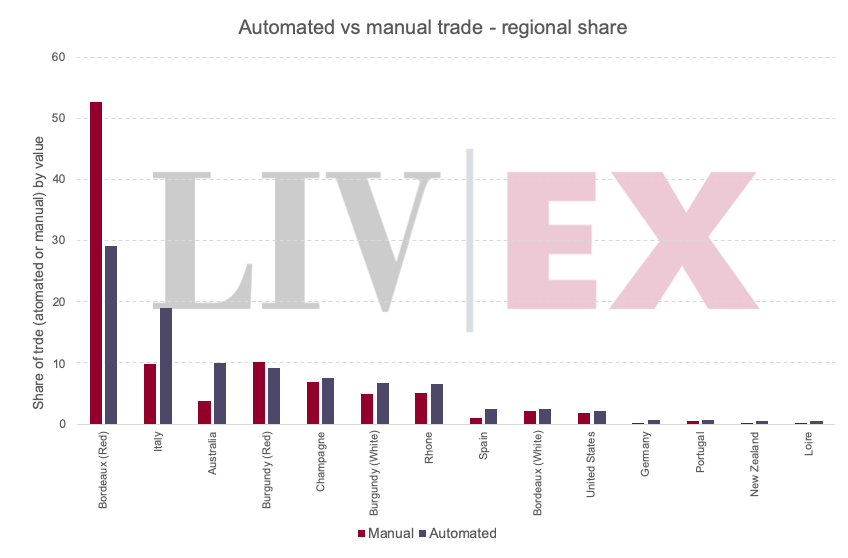
Sell at higher prices
It’s unsurprising that automated trades are lower value than manual trades on average. Professionals understandably spend more time focused on high-value deals, but when merchants automatically list or display lower value offers to their customers, sales are plentiful.
For merchants who automate, this represents an opportunity to diversify into different regions efficiently. These wines can be bought and sold with little manual intervention, leaving the merchants to collect commission with minimal effort.
The flip side of this is that wines traded automatically have higher prices relative to their market value. On average, they sell for 8.8% higher relative to Market Price – meaning healthier margins for wine merchants.
Looking to the future
Many wine merchants are now making use of automation to trade more wine, more efficiently. In the coming weeks, we’ll document some stories anonymously to explain how and why they implemented automation – and its impact.
These stories illustrate the potential impact for other players in the market. Collectively, they tell a story about the future direction of the market as a whole: more diverse, more efficient, and more global.
Report – Seven simple ways to use automation

In our free report, we look at seven ways that Liv-ex members are using automation to help their businesses succeed. It outlines how you can make use of automation, and the first steps needed to get started. Claim your free copy using the short form below.

